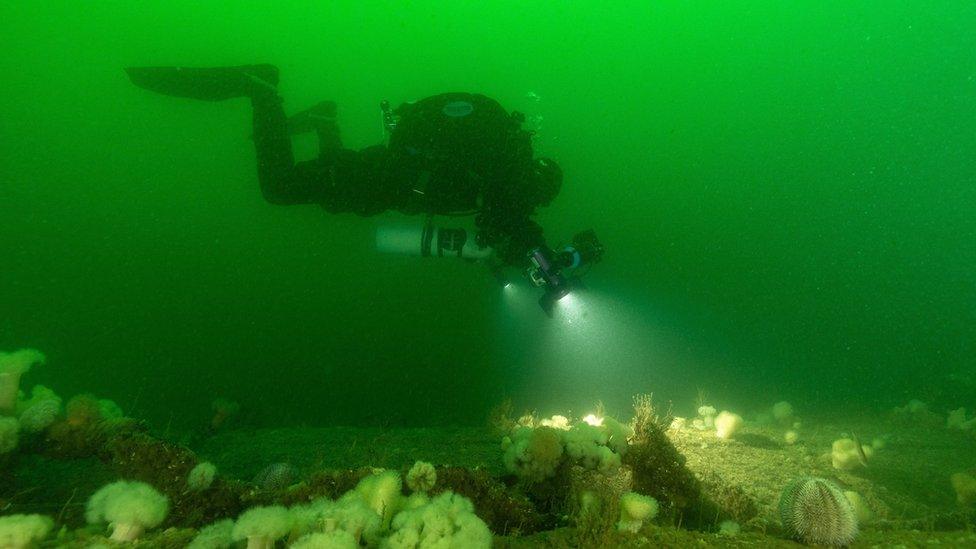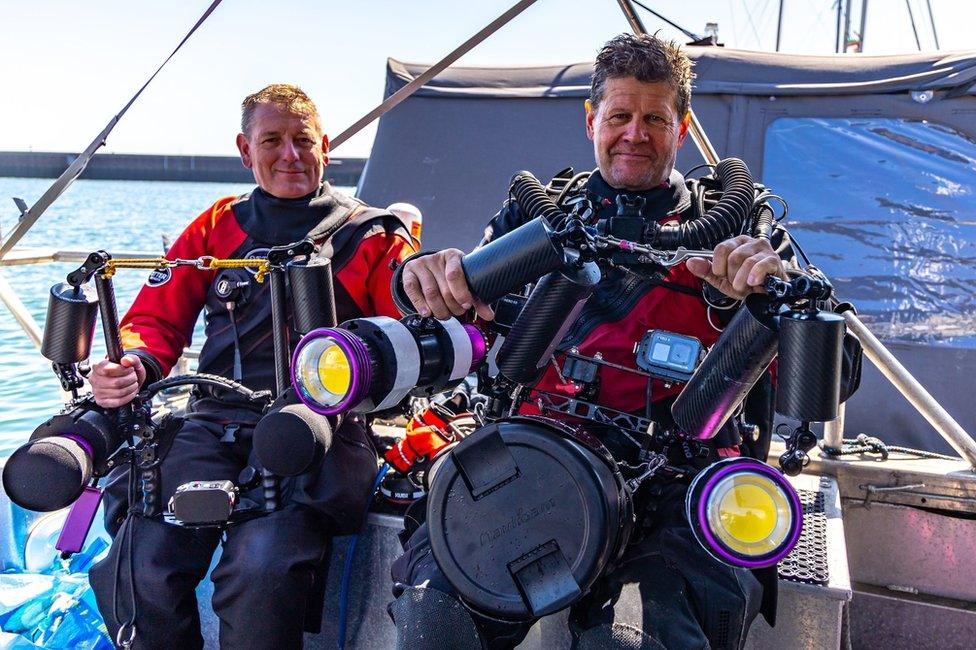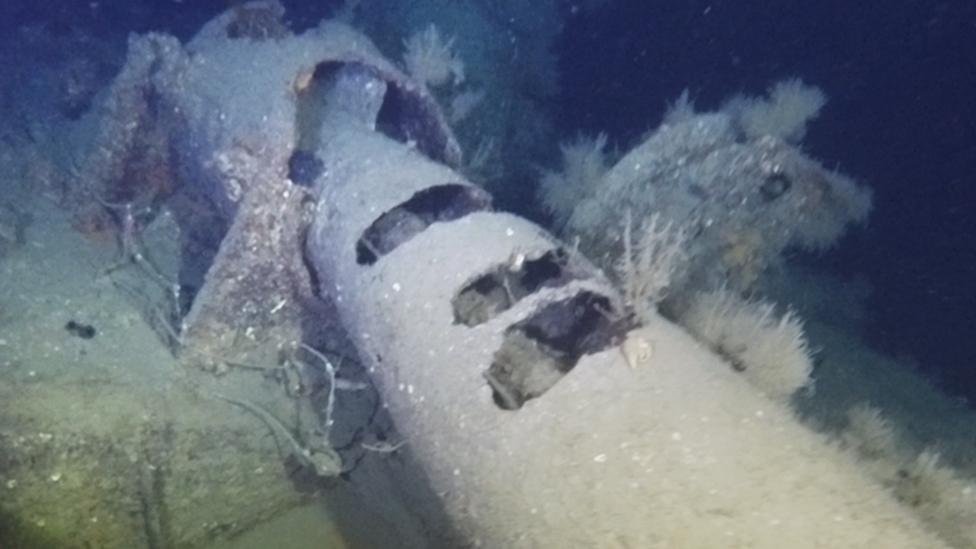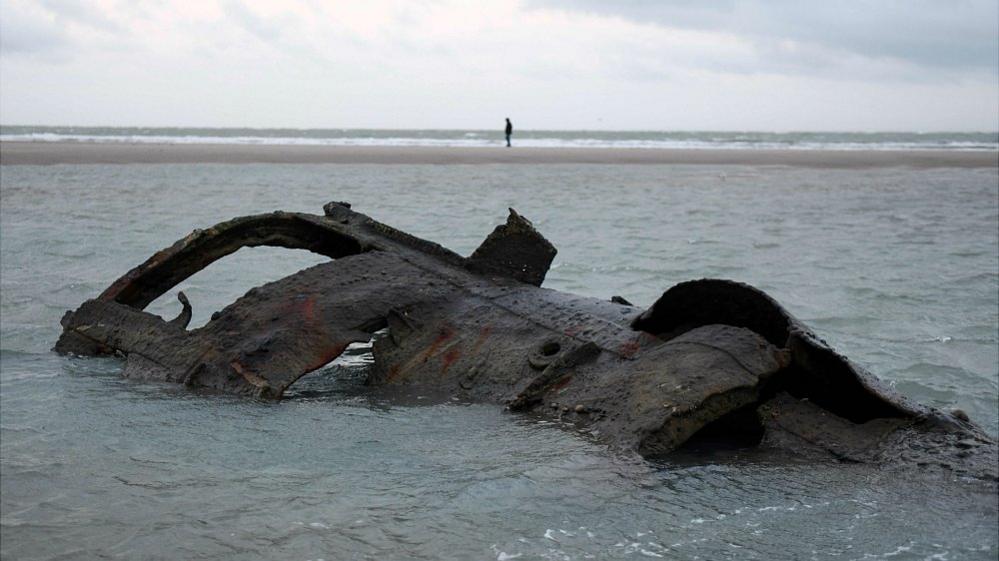Experts create 3D model to solve U-boat sinking puzzle
- Published

The detailed 3D map of UC-71 shows doors which it is believed were opened by the crew
A German U-boat from World War One is likely to have been sunk deliberately rather than being handed to the Allies, according to a new 3D model produced by Scottish researchers.
A team from Dundee University said submarine UC-71 was apparently scuttled off the German archipelago of Heligoland on 20 February 1919.
At the time it was being transferred to the Royal Navy after the armistice.
The boat previously sunk 61 civilian ships in the North Sea.
The official reason for the sinking was bad weather and high waves, although theories abounded that it was sunk by its own crew as the hatches had been opened.
A diary entry from an engineer on the boat read: "No Englishman should step on the boat. That was the will of the crew, and they achieved it."
Nobody died during the sinking. The 50m-long vessel lay in 22m of water and was popular with divers before it was given legal protection.
Now a team of marine archaeologists and 3D visualisation experts have teamed up to finally solve the arguments around the sinking by creating a detailed computer model of the boat, which used mines and torpedoes over its three years in service.

The team were underwater for up to four hours at a time photographing the wreck
The team from Dundee University was led by Prof Chris Rowland, an expert in the 3D visualisation of underwater environments at Duncan of Jordanstone College of Art and Design, and Prof Kari Hyttinen, a technical diver and underwater videographer from Finland.
Prof Hyttinen specialises in documenting deep wreck sites with photogrammetry, the process by which 3D models of objects are created using overlapping photographs.
During four-hour-long dives, Prof Rowland and colleague Dr Florian Huber, an underwater archaeologist with scientific diving company Submaris, took thousands of photographs using state-of-the art cameras and high-intensity lighting.
They believe the 3D map created from these prove the boat was scuttled by its own crew.
Prof Rowland said: "Hatches are certainly open across the submarine, which corroborates the claim that it was deliberately sunk.
"It is possible, however, that divers may have visited the wreck before it was protected, and highly likely that divers may even have been inside the sub, though this would be exceptionally dangerous.
"But given what we know and from the physical evidence witnessed when we were down there and from our imagery, it is likely that the boat was sunk deliberately."

Chris Rowland and Kari Hyttinen mapped the wreck using state-of-the art underwater cameras and lighting
He described the process as a "walk in the park" compared with working on U-boats found off Orkney, due to the wreck resting on a flat seabed without too much silt.
Prof Rowland added: "This wreck is different from many others because it was sunk by an act of defiance, not an act of war.
"While the conflict may have been declared over, for those who sailed on submarines such as UC-71 there was still a tremendous loyalty to their crew, boat and nation.
"While nobody died in this sinking, UC-71 is associated with a great loss of life at sea.
"By capturing this particular wreck we are able to capture a moment in time that allows us not only to study this single act, but also serves to remind us of those who lives were claimed by the vessel during the hostilities."
There are now plans for a two-metre 3D model of the wreck to be produced using the new imagery, to sit alongside the crew member's journal at a museum on Heligoland.
Related topics
- Published25 July 2023

- Published12 January 2019
